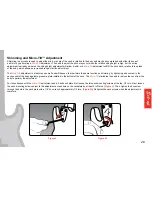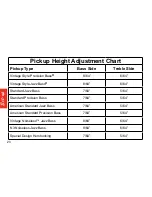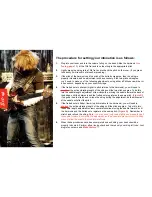
Figure D
Figure E
The following setup procedures and specifications are for your Fender bass as equipped with the
strings that come on the instrument as standard equipment from the factory. If you plan to change
string gauges, you may need to adjust the specs somewhat to compensate for the changes in
string sizes. Modifications of the specs may also be made (within limited parameters) to adjust
for your individual playing style or application (i.e., how hard you pick, finger, slap, pop or fret the
bass).
Truss Rod Adjustment
String tension exerts a tremendous
bending force on the neck of the
bass. The adjustable steel truss rod
in the neck exerts a counter-force to
the pull of the strings. If these two
opposing forces are not in harmony
with each other, the result will be a
poorly playing instrument.
Note: A
truss rod that is too loose will result
in a concave neck bow and high
action, which will require more effort
to play,
(
Figure D
)
.
A truss rod that is
too tight will result in a convex neck
bow, excessively low action and buzzing strings,
(
Figure E
)
An ideally adjusted neck will have a moderate amount of relief (curvature), to accommodate the
amplitude of the vibration of each string. The factory specification for appropriate neck relief for
Fender® bass guitars is between .012” and .014”, measured between the bottom of the string and
the top of the fret, at the 7th fret.
To determine if your bass needs a truss rod adjustment, you must first measure the current relief
in the neck. Before beginning, make sure the bass is tuned to proper pitch to facilitate an accurate
measurement. Next, install a capo at the 1st fret (nearest to the headstock). If you are adjusting a
17
Set-up
Содержание Vintage Style Precision Bass
Страница 1: ...OWNER S MANUAL FOR FENDER BASSES ...
Страница 7: ...6 ...
Страница 10: ...9 ...
Страница 35: ...34 ...
Страница 36: ...P N 0079381000 Rev A 2011 FENDER MUSICAL INSTRUMENTS CORP ...
















































